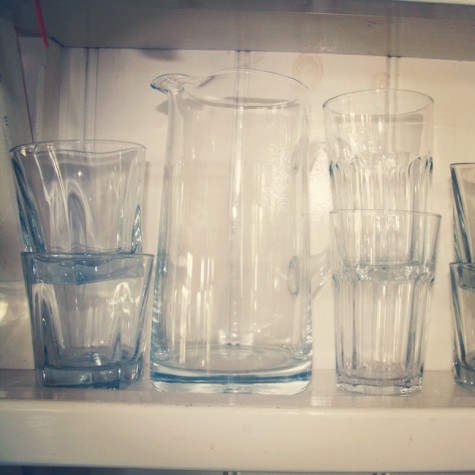Having grown up on farms, it’s always seemed completely natural to me to use rainwater to drink, and throughout the house. When I moved to the city for university, I couldn’t believe that no-one bothered to catch the rainwater that was falling – most people just relied on the mains water supply for everything, even watering their gardens. A long period of drought in Australia meant that restrictions were brought in to control people using mains water in their gardens, and as a result of those restrictions there has been a gradual movement towards at least harvesting the rainwater for garden use. It’s great to see people installing water tanks to provide their garden water requirements – often hidden under decks, or using slimline tanks along the side of the house.

Drink It!
But even though collecting water for the garden is a great start, there seems to be a massive resistance to the idea that rainwater is safe to drink. Seems totally bizarre to me! Fortunately there has also been a shift towards rainwater beginning to be used in bathrooms, and using clever plumbing to effectively run two systems in one household – one for mains, and one for rainwater. To help with this hybrid approach, there’s some cool rainwater pumps that have been designed to detect when rainwater supplies are low, and automatically switch to mains water.

All Rainwater, All the Time
Our place is 100% rainwater, and what falls from the sky tastes fantastic, is incredibly clean, and provides all the water we need in the house, year round. We’ve got around 60,000 litres supply in two large tanks and one smaller tank. The water that hits the tanks is really clean thanks to filters on the guttering, and filters on the tank inlet. It’s a good idea to check water levels fairly regularly, even with just a quick rap on the side of the tank to find the water level. There are also devices that provide you with a quick visual water level of the tank, which are a nice touch. We got into trouble last summer when we’d be receiving lots of rain, but hadn’t checked the tank levels for a while. When we did, it was a hell of a shock – they were on their way to empty. The inlet filters had become clogged, I hadn’t checked ’em and all that amazing water was, um, not harvested. That’s embarrassing! So if you’ve got filters on your tanks, check them regularly. You can also use a first flush diverter, which takes the first few litres of each rainfall and disposes of it, so there’s less stuff to filter anyway. It’s also a good idea to clean the inside of the tanks every couple of years – either using a professional service or carefully doing it yourself, making sure you’ve got someone with you who remains outside the tank at all times for safety.
Off the Grid Awesomeness
If you’re concerned about the taste of rainwater, compared to treated mains water, there are in-line filters available for a few hundred dollars that will give you amazing tasting water that will probably win taste tests against Evian or Fiji water. Or you can try kitchen tap or kitchen jug charcoal filters. I think rainwater tastes better than bottled water, and I highly recommend thinking about going solo and setting up your own water supply – no water usage bills, no restrictions, no chemically treated water. Just great tasting, completely natural and completely healthy water – totally worth checking out!
Leave a Reply